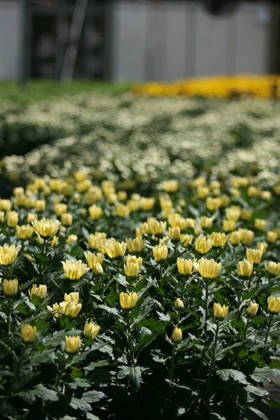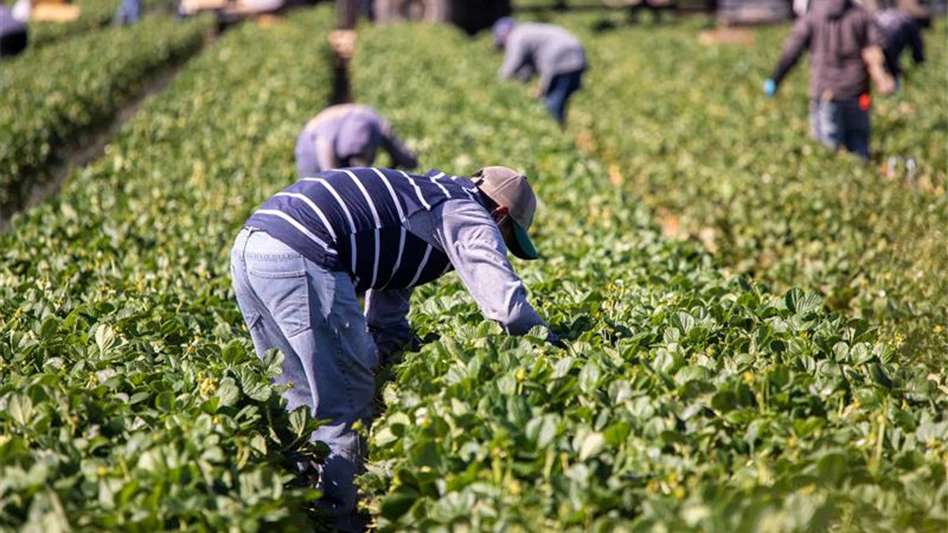
By Joyce Latimer, Extension Specialist, Greenhouse Crops, Virginia Tech; and Brian Whipker, Extension Specialist, Floriculture Crops, North Carolina State University
The selection of PGRs and their application rates will be affected by the vigor of the cultivars selected and how your crop is grown. Especially with very vigorous plants, higher fertility and irrigation levels will increase the amounts of growth regulator required to prevent excessive growth. Shading, lower light levels, or tight plant spacing — especially under higher growing temperatures — will also increase plant stretch and reduce lateral branching. For the highest-quality plants, the use of PGRs must be integrated into your production plan.
PGRs are most effective when applied at the appropriate times to regulate plant growth or development. In other words, growth retardants cannot “shrink” an overgrown plant. They must be applied before the plant is overgrown to avoid plant stretch. When planning PGRs in your production schedule, consider what you want to accomplish with the treatment.
• Do you want to regulate shoot growth of the plant, resulting in a sturdier, more compact plant with improved color? If so, you probably want a growth retardant.
• Do you want to increase plant branching for enhanced cutting production or for a bushier potted plant or hanging basket? If so, you probably want to use a branching agent or “chemical pincher.”
• Do you want to enhance flower initiation or synchronize flowering? If so, you probably want to use chlormequat chloride or gibberellic acid.
• Do you want to remove flowers from stock plants to increase the number of vegetative cuttings? If so, you probably want to use an ethylene-generating compound.
Answering these questions will indicate which type of PGR you need to use to accomplish your goal and the most appropriate timing of the application. Then you will need to select a specific PGR in that class and determine the appropriate dosage and application method to attain the desired response.
Regulating shoot growth. Most PGRs used in the greenhouse or nursery are used to regulate shoot growth of containerized crops. These PGRs are referred to as “growth retardants.” Typical growth retardants are ancymidol, daminozide, chlormequat chloride, flurprimidol, paclobutrazol, and uniconazole. Now that most of the PGR chemistries are off-patent, there are several options available. These PGRs control plant height by inhibiting the production of gibberellins, the primary plant hormones responsible for cell elongation. Therefore, these growth-retardant effects are primarily seen in stem, petiole, and flower stalk tissues. Lesser effects are seen in reductions of leaf expansion, resulting in thicker leaves with a darker green color. Other benefits of using these PGRs in plant production include improved plant appearance by maintaining plant size and shape in proportion with the pot and increased shipping capacity with the smaller plants.
Plant growth retardants also increase the tolerance of plants to the stresses of shipping and handling, as well as retail marketing, thereby improving shelf life and extending plant marketability. Remember, growth retardants do not reduce plant size. They limit the plant’s growth rate. You must apply the growth retardant prior to the “stretch.” Look for recommendations on the PGR label for time of application.
These recommendations will be given in terms of plant development or plant size, as opposed to production time. For example, uniconazole labels specify that pansies should have attained a minimum height of 4 inches prior to application. Paclobutrazol labels state that bedding plant plugs should be treated at the one to two true-leaf stage and bedding plants (after transplanting) at 2 inches of new growth or when the plants reach marketable size. Generally, growth-retarding PGRs should be applied just prior to rapid shoot growth. This is generally one to two weeks after transplanting a plug, after the roots are established, and as the plant resumes active growth.
On pinched plants, it is after the new shoots are visible and starting to elongate. This is where the art of plant growth regulation is most important. You must learn how your crop grows and when to intervene to obtain the desired results.
Remember to note details of crop development in your records of PGR treatments. For example, due to weather conditions, next year you may need to treat at seven days after transplanting instead of at 10 days after transplanting, which you used this year. You must gauge when rapid elongation will likely occur and treat to counter it.
Many growers use multiple applications of growth retardants to better control plant growth. A single application at a high rate early in the plant production cycle may be excessive if growing conditions are not as good as expected. An early application at a lower rate provides more flexibility, but the tradeoff is the additional labor involved with a second application if it becomes necessary. Some growers improve crop uniformity by using multiple applications of lower rates to affect small corrections in plant growth.
Be aware that excessive rates of many of these PGRs can cause persistent growth control in the flat or even in the landscape. It is always a good idea to evaluate the long-term effects of your treatments by growing some out for yourself and talking with your customers.
Be careful to avoid late applications, especially of paclobutrazol or uniconazole, because they may delay flower opening on bedding plants. However, drench applications of paclobutrazol have provided excellent control of poinsettia height very late in the production cycle without causing the reduction in bract size accompanying late spray applications. Learn the art of using PGRs for plant growth regulation.
Enhancing lateral branching. Another group of PGRs used in floricultural crops are those that enhance branching, including ethephon, benzyladenine, dikegulac sodium, and methyl esters. These PGRs are frequently called chemical pinchers because they generally inhibit the growth of the terminal shoots or enhance the growth of lateral buds, thereby increasing the development of lateral branches. They can be used to replace mechanical pinching of many crops like Vinca vine, Verbena, Lantana, and English ivy (Hedera).
Plant flowering. Plant growth regulators can be used to enhance flowering.
To improve flowering, the growth promoter gibberellic acid (GA3) can be used to substitute for all or part of the chilling requirement of some woody and herbaceous ornamentals typically forced in the greenhouse, including azalea for florist crops and Aster for cut flowers. These compounds also can improve flowering and/or bloom size of camellia and baby’s breath (Gypsophila), promote earlier flowering and an increased yield of statice (Limonium) and induce flowering of Spathiphyllum. Gibberellic acid is also used to promote growth and increase stem length of other cut flowers like stock (Matthiola), Delphinium, and ‘Sweet William’ (Dianthus). See product labels for specific uses and recommended rates. Again, timing is critical, because late applications or excessive rates may cause excessive plant stretching, resulting in weak, spindly stems. Chlormequat chloride (a plant growth retardant) used to control stem height of hibiscus and geranium also improves early flowering of these crops.
Removal of flowers. Flower removal is especially desirable for stock plants maintained for cuttings of vegetatively propagated
ornamentals, like Verbena or Lantana. Ethephon is the primary compound used for flower removal. Once ethephon is absorbed by the plant, it is converted to gaseous ethylene — a natural plant hormone effective in many plant processes. Ethylene is the
primary hormone responsible for flower senescence and fruit ripening. It is the “postharvest” hormone.
With proper rates and timing, it will remove unwanted flowers from stock plants, cuttings, or plugs. Flower removal diverts more energy into vegetative growth, increases the number of laterals available for cuttings on stock plants, and promotes increased branching of plugs and finished plants, which increases fullness in the container. Because initiation and development of flowers require time, ethephon should not be used on crops within six to eight weeks of marketing.
Latest from Greenhouse Management
- University of Maryland graduate student receives 2024 Carville M. Akehurst Memorial Scholarship
- Applications open for Horticultural Research Institute Leadership Academy Class of 2026
- De Vroomen Garden Products announces new agapanthus variety
- Bug budget boom
- Plantpeddler announces details for Poinsettia Variety Day 2024
- ADVANCEA hosting greenhouse environmental control online course
- Making the switch: A guide to retrofit HID to LED lighting
- Tips for fast finishing
.JPG)






